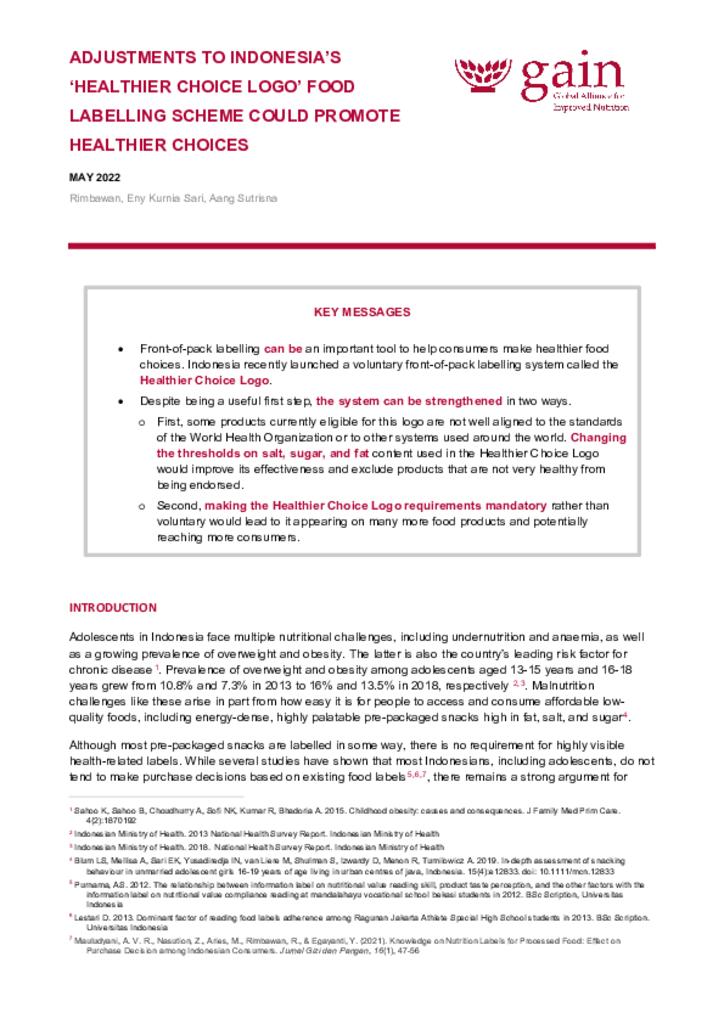Adolescents in Indonesia face multiple nutritional challenges, including undernutrition and anaemia, as well as a growing prevalence of overweight and obesity. The latter is also the country’s leading risk factor for chronic disease . Prevalence of overweight and obesity among adolescents aged 13-15 years and 16-18 years grew from 10.8% and 7.3% in 2013 to 16% and 13.5% in 2018, respectively. Malnutrition challenges like these arise in part from how easy it is for people to access and consume affordable low-quality foods, including energy-dense, highly palatable pre-packaged snacks high in fat, salt, and sugar .
Although most pre-packaged snacks are labelled in some way, there is no requirement for highly visible health-related labels. While several studies have shown that most Indonesians, including adolescents, do not tend to make purchase decisions based on existing food labels there remains a strong argument for improving food labelling and related consumer education and outreach. If labels were better designed, the practice of reading them could both improve nutritional knowledge and influence purchasing decisions. To achieve this, it is critical to design informative food labels that are placed prominently on the front of the packaging, as these are most likely to influence consumer decisions to choose healthier foods.
In 2019, the Indonesian government launched an optional Healthier Choice Logo to help consumers identify products that are healthier within specific categories – for example, ready-to-consume drinks or instant pasta and noodles. The regulation was updated in 2021 to include 20 different food categories, including bakery products, ice cream, ready-to-eat snacks, processed peanut products, and ready-to-eat cereals .
To promote understanding of the Healthier Choice Logo among adolescents as well as to learn more about adolescent food choices, GAIN supported a programme called Pelajar Peduli Gizi (Students for Nutrition). Under this programme, adolescents were supported to collect information and input details from nutritional labels into a website to generate a database of products they regularly consume. It was expected that reading the nutrition information on their snacks or drinks, accessing the website, and inputting answers to a set of questions would make the adolescents better informed about their nutrient intakes and more aware and deliberate around their consumption choices.
